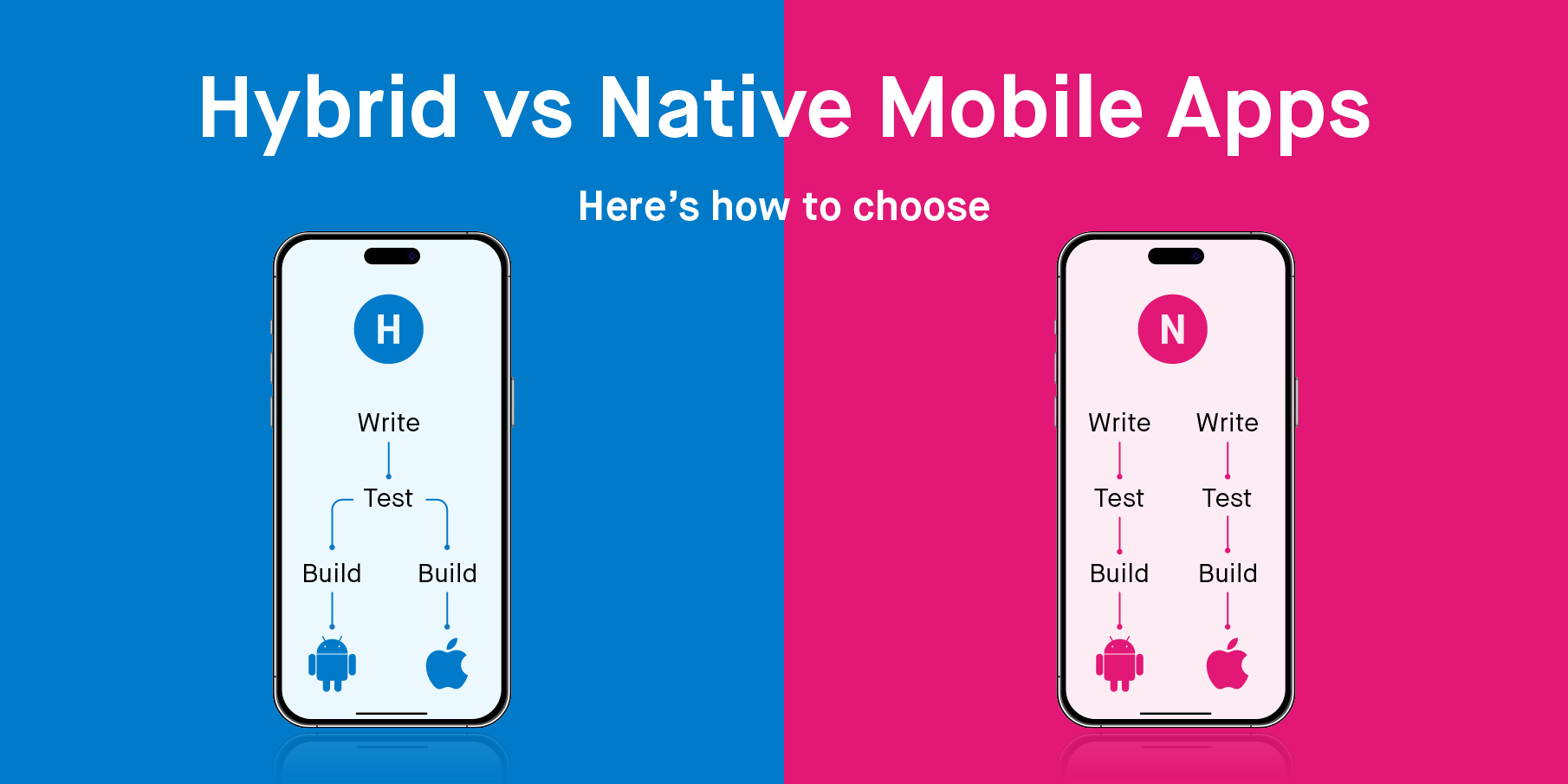Since the release of the first iPhone in 2007, apps have been the center focus of mobile engineers constantly pushing the innovation envelope. But we’ve approached a turning point in how apps are developed: Mobile engineers face a choice between writing code for a native app or a hybrid app.
The difference between native and hybrid apps
The main difference between the two is that while native apps are developed for a specific operating system like iOS or Android, hybrids can function cross-platform. Due to their cross-platform capabilities, they are often the go-to for budget-driven development. But, thanks to recent technological advancements, a new era in hybrid apps development is upon us.
Native or hybrid apps?
There has been an endless debate for whether there is a distinctly superior choice between developing apps natively and as hybrids. Native apps represent a massive market. Aside from mobile phones and tablets, native apps are designed for other smart devices such as smartwatches or connected cars. They perform well and, when paired with premium design and quality development, support data-heavy products, offer complex functionalities and great user experience.
Cross-platform applications tend to offer slower performance but on the other hand – save time and money. Instead of designing, developing and maintaining separate apps, teams only need to focus on one that’ll function on all mobile systems. The testing period in the creation of an app is another area that sees benefit from more focus on hybrid technology. The code of the app is tested for all platforms at the same time, instead of having to test more than one code for all available endpoints.

The wonders of Flutter
Hybrid apps can be written using cross-platform frameworks such as Ionic, Xamarin, React Native or Flutter. The last one is particularly interesting as it’s currently triggering the most attention among mobile developers. According to LinkedIn data, Flutter technology happens to be the fastest-growing skill among software engineers. Backed by Google and released in 2017, it enables developers a fairly quick shift from native to hybrid coding.
Flutter applications are written in the Dart language which is similar to both Kotlin (dedicated for Android development) and Swift (iOS). It’s easier and faster to become fluent in Dart than it is in JS, which is used in React Native. Also, with Apple announcing its latest UI framework, it will now be easier for native iOS engineers to deal with Flutter, as SwiftUI follows the same pattern of a declarative syntax.
The recent I/O 2019 Conference proves the high hopes Google has for Flutter, as the framework basically stole the show. Adam Seligman, Google’s VP of Developer Relations announced that Flutter now supports the web. Same technology, same team of specialists and a single source code for all: mobile devices, web and desktop applications. Flutter seems to be re-defining timesaving and cost-saving solutions. Another thing: performance-wise (when avoiding common pitfalls in development) it pretty much rocks.
Dynamic engineers are a necessity
Why do modern-day developers invest time in learning new cross-platform solutions? The most straightforward answer would be: to survive in the ever-changing tech landscape. Hybrid apps become increasingly popular and both customers and employers look primarily for engineers who are flexible. Large companies that experience frequent change in projects and product development drive the demand for versatile developers who can deliver top-notch native AND hybrid products.
Consulting experts
Customer perspective is usually quite universal – the product has to offer seamless user experience. Application performance is one of the most important factors in reaching that goal. To the end user it doesn’t matter at all whether an application is built with one technology or another – all that matters is that it runs smoothly on their chosen device.
From a business point of view, the decision about going native or hybrid depends on the product’s complexity and project budget, among others. It’s a choice that should be made with a group of experienced software specialists that are aware of all the pros and cons of each technology.
Conclusions about hybrid apps
One thing is sure: once apps become easier to develop, monetization becomes faster and delivery cheaper. A gradual shift towards hybrid apps might be the most important trend we’ll observe in the future of mobile. And let’s not forget that in the tech world, the future is now.
Unlock the future of app innovation. Also, check out more about media development software.